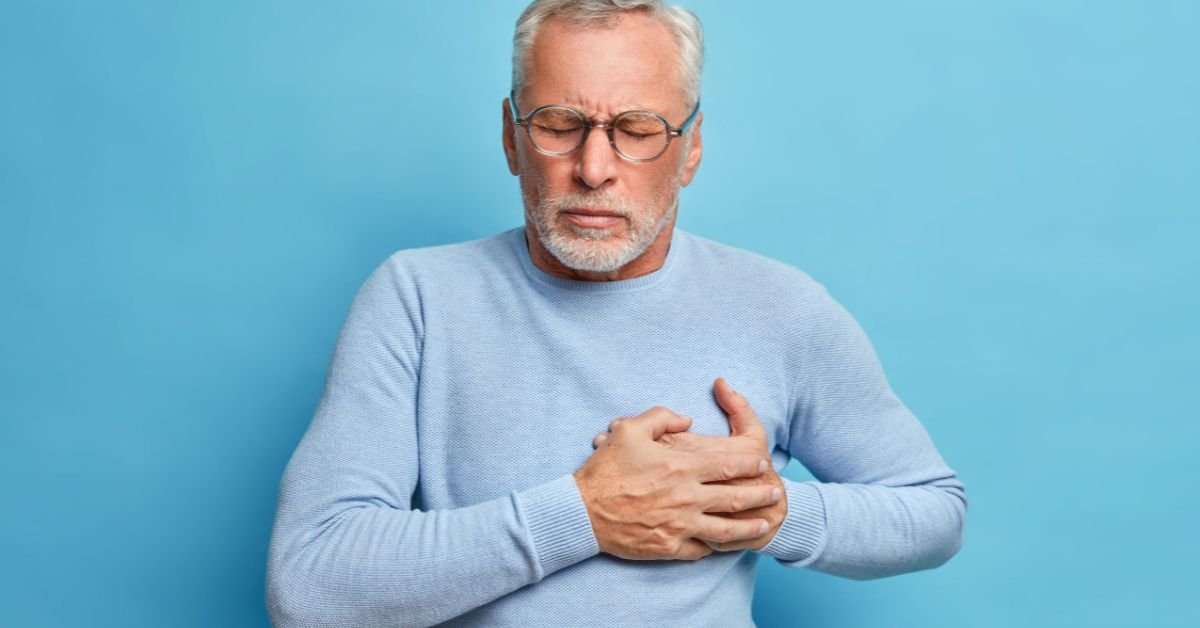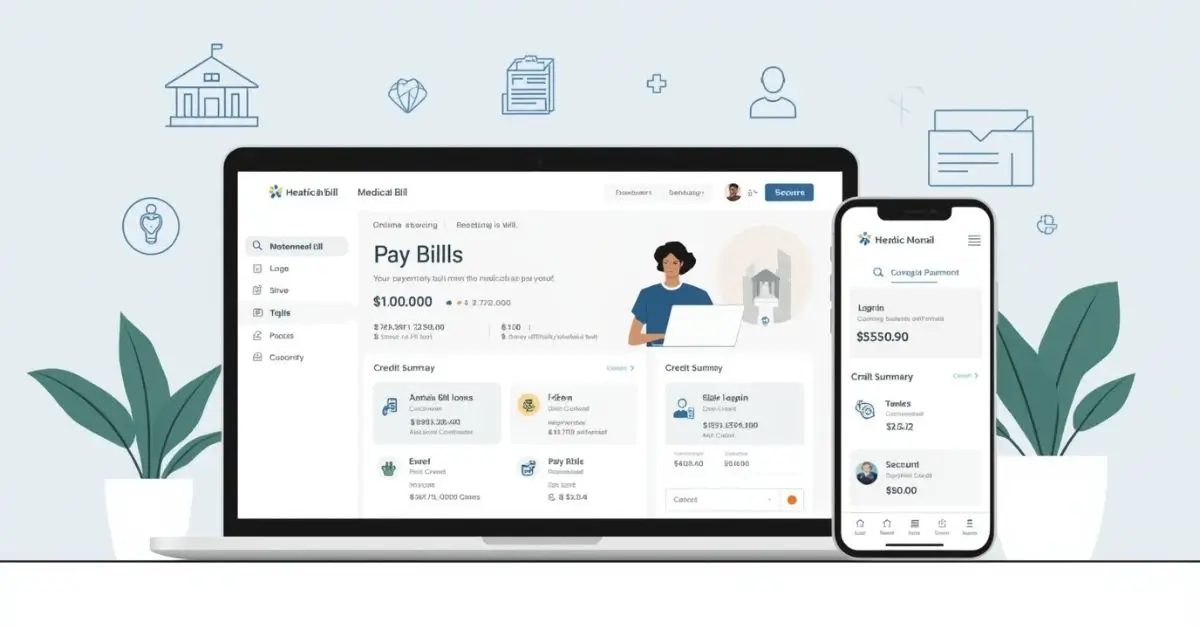HEALTH
Gas Pain vs Heart Attack: Knowing the Crucial Difference

Gas Pain vs Heart Attack gas pain or as critical as a heart attack. Understanding how to differentiate between these two conditions is essential for timely medical intervention and peace of mind. While both can cause pain in the chest region, the underlying causes, associated symptoms, and severity vary dramatically.
What Is Gas Pain?
Gas pain, also known as abdominal or intestinal gas, occurs when excess air or gas builds up in the digestive tract. This can result from swallowing air, certain foods, or the breakdown of undigested food by bacteria in the colon. Gas pain is often linked to conditions such as gastroesophageal reflux disease (GERD), indigestion, or acid reflux.

Typically, gas pain causes sharp, stabbing, or cramping sensations in the upper abdomen and chest, often described as pressure or fullness. It may intensify after eating or drinking carbonated beverages and is usually relieved by passing gas or burping. Importantly, gas pain is generally not associated with symptoms like sweating, shortness of breath, or dizziness.
What Happens During a Heart Attack?
A heart attack, medically termed myocardial infarction, occurs when blood flow to a part of the heart muscle is blocked, often due to a clot in the coronary arteries. This deprivation of oxygen-rich blood causes the heart tissue to become damaged or die if not promptly treated.
The pain associated with a heart attack is often described as a heavy, squeezing, or crushing pressure in the center or left side of the chest. This discomfort can radiate to the jaw, neck, arms, or back. Unlike gas pain, heart attack symptoms are accompanied by sweating, nausea, shortness of breath, and a feeling of impending doom. Recognizing these signs early and seeking emergency care can save lives.
Key Differences Between Gas Pain and Heart Attack Symptoms
Location and Type of Pain
While both conditions can produce chest pain, the quality and location vary. Gas pain often manifests as sharp, fleeting sensations or bloating in the upper abdomen or lower chest. Heart attack pain tends to be persistent and dull, often described as an intense pressure or tightness centralized in the chest.
Duration and Triggers
Gas pain typically occurs after eating, especially with gas-producing foods like beans, carbonated drinks, or fatty meals. The discomfort fluctuates and often improves with burping or flatulence. In contrast, heart attack pain usually comes on suddenly and does not improve with positional changes or passing gas. It may occur during physical exertion or at rest.
Associated Symptoms
Gas pain usually lacks systemic symptoms, whereas heart attacks present with additional signs such as shortness of breath, profuse sweating (diaphoresis), dizziness, palpitations, or fainting. These accompanying symptoms signal cardiac distress and require immediate medical evaluation.
Why It’s Important to Differentiate
Misinterpreting chest pain can have severe consequences. Assuming heart attack symptoms are merely indigestion or gas may delay critical treatments like angioplasty or clot-busting medications. Conversely, unnecessary emergency room visits for benign gas pain can cause undue stress and strain healthcare resources.
Medical professionals often rely on a combination of clinical history, physical examination, and diagnostic tools like an electrocardiogram (ECG), blood tests for cardiac enzymes, and imaging to confirm the diagnosis. Early intervention for heart attacks improves survival and reduces complications such as heart failure.

Diagnostic Tools and Tests
When someone presents with chest pain, healthcare providers use various tests to rule out or confirm cardiac issues:
- Electrocardiogram (ECG): Detects electrical abnormalities in the heart suggestive of ischemia or infarction.
- Blood Tests: Cardiac enzymes like troponin levels rise during a heart attack.
- Chest X-ray: Helps rule out lung-related causes of chest pain.
- Endoscopy or Barium Swallow: Sometimes used if GERD or acid reflux is suspected as the cause of symptoms.
- Stress Testing: Assesses how the heart performs under physical exertion to detect blockages.
When to Seek Emergency Care
Immediate medical attention is critical if you experience chest pain with the following:
- Pain lasting more than a few minutes, especially with no relief.
- Pain spreading to the arms, neck, jaw, or back.
- Shortness of breath, sweating, nausea, or dizziness.
- Rapid or irregular heartbeat.
- Sudden weakness or fainting.
These symptoms indicate a possible heart attack or other life-threatening conditions like pulmonary embolism or aortic dissection and require calling emergency services immediately.
Managing Gas Pain
For non-cardiac chest pain due to gas, treatment focuses on relieving discomfort and preventing recurrence:
- Avoid gas-inducing foods such as beans, broccoli, carbonated drinks, and fatty meals.
- Eat smaller, more frequent meals.
- Practice slow eating to reduce swallowed air.
- Use over-the-counter remedies like simethicone or antacids for indigestion.
- Maintain regular physical activity to promote digestion.
- Manage stress, as anxiety can exacerbate gastrointestinal symptoms.
If symptoms persist or worsen, it’s essential to consult a healthcare professional to exclude other causes.
Lifestyle Changes for Heart Health
Prevention is key when it comes to heart attacks. Adopting heart-healthy habits reduces the risk of coronary artery disease, the primary cause of myocardial infarction:
- Maintain a balanced diet low in saturated fats and rich in fruits, vegetables, and whole grains.
- Exercise regularly to improve cardiovascular fitness.
- Avoid smoking and limit alcohol intake.
- Control blood pressure, cholesterol, and diabetes through medication and lifestyle.
- Manage stress with relaxation techniques like meditation or yoga.
- Attend regular health screenings for early detection of heart conditions.
FAQs
Q: Can gas pain mimic a heart attack?
A: Yes, gas pain can sometimes cause chest discomfort that feels similar to heart-related pain. However, gas pain is often sharp, localized, and relieved by passing gas, whereas heart attack pain is more intense, persistent, and accompanied by other symptoms.
Q: How can I tell if my chest pain is serious?
A: If chest pain is severe, lasts longer than a few minutes, radiates to other parts of the body, or is associated with sweating, shortness of breath, or dizziness, seek emergency medical care immediately.
Q: Can acid reflux cause chest pain?
A: Yes, acid reflux or GERD can cause chest discomfort that mimics heart pain. This pain is often burning and related to meals but can be differentiated through diagnostic testing.
Q: What tests confirm a heart attack?
A: An electrocardiogram (ECG) and blood tests for cardiac enzymes like troponin are primary tools used to diagnose a heart attack.
Q: How is gas pain treated?
A: Gas pain is treated with dietary changes, lifestyle modifications, and sometimes over-the-counter medications like antacids or simethicone.
Conclusion
Understanding the difference between gas pain and a heart attack is crucial for timely and appropriate care. While both conditions can cause chest discomfort, their causes, symptoms, and treatment approaches differ significantly. If you experience chest pain and are uncertain about its cause, always err on the side of caution and seek medical attention immediately.

HEALTH
Best Vitamix Recipes for Smoothies, Soups & More

The best Vitamix recipes aren’t just about speed or convenience—they’re about quality. In 2025, health-conscious eaters are turning to whole-food blending for improved nutrition, smoother texture, and zero waste.
Vitamix’s high-torque motor and precise blade design let you create restaurant-quality food in minutes. Think of it as your ticket to fresh, clean eating—without sacrificing flavor.
One user recently said online, “I’ve never eaten this healthy in my life, and it’s all because of my Vitamix!” That sentiment captures why the brand’s recipes have earned cult status in kitchens worldwide.
Vitamix Smoothie Recipes: Fuel Your Day Naturally
Few things are as iconic as best Vitamix recipes. These blends combine fruits, vegetables, and superfoods for a burst of vitamins and antioxidants.
Classic Green Smoothie
- 1 cup spinach
- ½ banana
- 1 cup frozen pineapple
- ½ cup Greek yogurt
- 1 cup almond milk
Blend on high for 30 seconds until silky smooth. The Vitamix green smoothie delivers freshness with zero grit—something most blenders can’t replicate.
Protein-Packed Berry Boost
A go-to for athletes, this one blends blueberries, protein powder, chia seeds, and oat milk. It’s the perfect best Vitamix recipes for busy mornings.
Healthy Vitamix Recipes for Everyday Nutrition
Healthy doesn’t mean bland. Vitamix helps retain fiber, vitamins, and natural sweetness, making your meals both delicious and nutrient-dense.
Energy-Boosting Breakfast Bowl
Blend frozen acai, banana, and spinach. Pour into a bowl and top with granola, coconut flakes, and hemp seeds. This is one of the Vitamix breakfast ideas that can replace sugary cereals with whole-food goodness.
Creamy Avocado Dressing
Use your blender to create a smooth, oil-free dressing. Combine avocado, lime juice, garlic, and water. Perfect for salads or roasted vegetables.
These whole-food blender recipes make eating healthy effortless.
Vitamix Soup Recipes: Comfort in Every Spoon
Did you know your Vitamix can heat soup through friction alone? That’s right—you can make a steaming bowl of goodness in under 10 minutes.
Roasted Tomato Basil Soup
- 2 cups roasted tomatoes
- 1 garlic clove
- 1 cup vegetable broth
- Fresh basil leaves
- Salt and pepper
Blend for 5–6 minutes until hot. Serve with crusty bread. This Vitamix soup recipe feels gourmet yet effortless.
Butternut Squash Bliss
Blend cooked butternut squash, onion, nutmeg, and almond milk for a cozy autumn meal.
These best Vitamix recipes are ideal for weeknights or meal prep Sundays.
Easy Vitamix Recipes for Beginners
If you’re just getting started, simplicity is key. The best Vitamix recipes for beginners focus on minimal ingredients but maximum flavor.
Peanut Butter Banana Smoothie
Combine banana, peanut butter, honey, and oat milk for a creamy drink that doubles as a meal replacement.
Quick Hummus Dip
Chickpeas, tahini, lemon juice, and garlic come together in seconds. The Vitamix dips and spreads collection is perfect for parties or snacks.
Once you master these, you’ll be confident enough to experiment with advanced recipes.
Vitamix Dessert Recipes: Sweet Without the Guilt
Who says desserts can’t be healthy? The Vitamix makes it possible to indulge without refined sugars or preservatives.
Chocolate Avocado Mousse
Blend ripe avocados, cocoa powder, maple syrup, and almond milk for a silky, rich dessert.
Frozen Mango Sorbet
Toss frozen mango chunks and a splash of coconut water into your blender. Within seconds, you’ve got a Vitamix frozen drink that’s as refreshing as ice cream.
These Vitamix dessert recipes are perfect for family nights or guilt-free indulgence.
Vitamix Meal Prep Ideas for Busy Lifestyles
The modern world doesn’t always allow time to cook daily. That’s why Vitamix meal prep ideas are so popular—they help you prepare healthy food in advance.
Smoothie Freezer Packs
Pre-portion fruits and greens into freezer bags. Each morning, add liquid and blend.
Homemade Sauces
Use your Vitamix to create marinara, pesto, or salsa in bulk. Store them in glass jars for quick weekday meals.
Meal prepping with a Vitamix saves time, reduces waste, and supports your health goals.
Homemade Nut Butter Vitamix Recipe: Smooth and Satisfying
Nothing beats homemade nut butter. Store-bought jars often contain added oils or sugars, but your Vitamix handles the real deal with ease.
Almond Butter Recipe
Add 3 cups of roasted almonds and blend on high for 1–2 minutes, using the tamper to push nuts into the blades. The result? Creamy, protein-rich almond butter.
You can experiment with peanuts, cashews, or even mixed nuts. Once you try this homemade nut butter Vitamix recipe, you’ll never buy it from a store again.
Whole-Food Blender Recipes: Nutrition Without Compromise
Whole-food blending keeps the fiber intact—something juicing can’t offer. Whole-food blender recipes ensure your body gets the full nutritional profile of your ingredients.
Try blending kale, apple, lemon, and ginger for an immune-boosting elixir. Or combine oats, almond milk, and banana for a quick breakfast on the go.
This style of blending supports digestion, weight management, and energy levels.
Vitamix Dips and Spreads for Every Occasion
Party snacks or healthy sides—either way, Vitamix dips and spreads bring your table to life.
- Classic Hummus: Chickpeas, tahini, lemon, and garlic.
- Roasted Red Pepper Dip: Sweet, smoky, and vibrant.
- Cashew Cheese Spread: A dairy-free alternative that pairs beautifully with crackers.
All take less than five minutes to make and taste miles better than store-bought options.
Best Vitamix Models for Recipes
Not all Vitamix models perform the same. Choosing the right one affects your results.
| Model | Best For | Highlights |
|---|---|---|
| Vitamix 5200 | Beginners | Simple controls, durable motor |
| Vitamix Ascent A3500 | Tech-lovers | Touchscreen, wireless connectivity |
| Vitamix Explorian E310 | Budget users | Compact design, full power |
| Vitamix Professional 750 | Culinary pros | Pre-programmed settings, low-profile jar |
Each model handles Best Vitamix recipes and soups beautifully, but advanced options offer better automation.
Vitamix Recipe Book Alternatives
While Vitamix sells its own recipe books, online communities have become goldmines of creativity. Blogs, YouTube channels, and social platforms feature thousands of Vitamix recipe book alternatives updated for modern diets like keto, vegan, and paleo.
Join online groups where users share custom creations—from protein-packed bowls to detox smoothies. It’s a great way to stay inspired year-round.
Vitamix Green Smoothie Power
Among all healthy Vitamix recipes, the green smoothie remains the symbol of clean eating. Packed with spinach, kale, cucumber, and apple, it’s a nutritional powerhouse.
You can modify it with matcha, chia, or avocado for extra creaminess. This blend offers energy, clarity, and hydration in one glass.
Real-World Results: Why Vitamix Users Swear by It
A fitness blogger recently shared, “I’ve replaced my morning coffee with a Vitamix smoothie—and I’ve never felt more energized.” Stories like this show why the brand continues to dominate the health and wellness space.
Vitamix isn’t just about blending—it’s about lifestyle transformation.
FAQ’s
What are the best Vitamix recipes for beginners?
Start with simple smoothies, dips, or soups. Recipes like banana-peanut butter smoothies and tomato soup are ideal.
Can I cook in a Vitamix?
Yes! The blades create friction heat that can warm soups and sauces in minutes.
How do I clean my Vitamix after making sticky recipes?
Add warm water and a drop of dish soap, then blend on high for 30 seconds. Rinse and air dry.
What’s the healthiest recipe to make in a Vitamix?
Green smoothies and whole-food soups are nutrient-packed and easy to digest.
Final Thoughts
The best Vitamix recipes do more than make food—they make life easier, healthier, and tastier. From smoothies to soups, desserts to nut butters, this machine empowers you to create wholesome meals in minutes.
HEALTH
How Antarvwsna Shapes Your Emotional and Spiritual Growth

The term antarvwsna (often written as antar-vasana or antar vāsaṇa) comes from ancient Sanskrit roots—“antar”, meaning “inner,” and “vasana (vāsaṇa)”, meaning “impression,” “desire,” or “tendency.” Together, they form a profound concept: the inner desires and latent motivations that shape human behavior.
It’s not just a philosophical term—it’s a mirror. When you understand your antarvwsna, you begin to see why you chase certain dreams, repeat certain mistakes, or feel internal longing for things you can’t logically explain.
“I didn’t realize how much my decisions were driven by my antarvwsna until I started journaling. It’s wild—our inner world writes our life story quietly.”
The Psychology Behind Antarvwsna
In modern psychological terms, antarvwsna resembles the subconscious cravings that influence behavior. Sigmund Freud might have called them unconscious impulses, while Carl Jung might describe them as archetypal energies—inner forces that guide our emotions and dreams.
Your antarvwsna isn’t inherently good or bad. It’s simply yours. It’s the sum of all experiences, memories, and emotions that have left deep emotional undercurrents inside your being.
The Layers of the Inner World
- Surface Mind: Rational thoughts, everyday logic, conscious goals.
- Middle Layer: Emotional habits, defense mechanisms, half-known feelings.
- Depth Layer (Antarvwsna): Subtle desires that whisper quietly but persistently—often guiding your life without you noticing.
These latent motivations influence your reactions, ambitions, and even relationships.
Antarvwsna and the Power of Inner Desire
Every decision you make—whether to chase a career, start a relationship, or change your lifestyle—emerges from your inner desire. This soul’s urge often hides beneath logic and reason, waiting for recognition.
When aligned with awareness, antarvwsna becomes your greatest ally. When ignored or repressed, it can become restlessness, confusion, or even anxiety.
Ask yourself:
- Have you ever felt drawn to something without knowing why?
- Do you sense a deep aspiration that seems out of sync with your daily life?
That’s your antarvwsna speaking.
Recognizing Hidden Yearning in Daily Life
Emotional Discontent
Even when everything looks perfect externally, a quiet internal longing persists. That’s a signal of ignored antarvwsna.
Repeating Patterns
If you find yourself in similar emotional loops—relationships, jobs, or habits—it’s your unconscious impulses seeking resolution.
Sudden Inspiration
Moments of random joy or creative flow often come when you align with your inner calling—a glimpse of fulfilled antarvwsna.
The Role of Vasana (Vāsaṇa) in Spiritual Growth
In Vedantic philosophy, vasana (vāsaṇa) refers to the subtle impressions that form desires, habits, and inclinations. Antarvwsna is like the living echo of those impressions—expressing as subconscious cravings and emotional drives.
By observing your vasanas, you start to dissolve the unconscious grip of conditioning. Spiritual teachers call this “cleaning the mirror of the mind.”
In 2025, this idea finds practical use in mindfulness and therapy. Cognitive-behavioral techniques, emotional journaling, and guided meditation all aim to bring hidden yearnings to light, so they no longer control behavior from the shadows.
How Antarvwsna Shapes Life Decisions
Think of antarvwsna as your personal algorithm. It runs quietly, filtering what you see, feel, and desire.
Career Choices
You might think you’re chasing money or status, but often it’s an unfulfilled inner desire for validation, purpose, or creativity.
Relationships
Ever wondered why you’re drawn to certain people? It’s rarely random—it’s your emotional undercurrent trying to heal or recreate something from the past.
Spiritual Practice
Your spiritual longing to meditate, explore consciousness, or travel inward arises from the same antarvwsna seeking completion.
The Science of Unconscious Impulses
Neuroscience now supports what ancient texts hinted at centuries ago. Studies in 2024 on latent motivation show that up to 95% of our daily actions are guided by subconscious patterns.
When you feel a sudden aversion, attraction, or intuitive knowing, your inner voice (the language of antarvwsna) is at play.
Brain imaging has revealed that subconscious desires activate the limbic system before the conscious mind even registers the thought. In simpler terms: your antarvwsna acts before you think.
The Balance Between Desire and Awareness
Desire itself isn’t the problem—blindness to it is. Subtle desire becomes suffering only when it’s unexamined.
When Antarvwsna Is Ignored:
- Emotional emptiness despite success
- Repetitive relationship dynamics
- Creative blocks
- Sudden burnout
When Antarvwsna Is Understood:
- Clarity of purpose
- Emotional balance
- Authentic expression
- Freedom from external validation
Awareness transforms antarvwsna from a shadow to a guide.
Practices to Understand and Channel Antarvwsna
Reflective Journaling
Write about your strongest emotions and recurring thoughts. Over time, patterns reveal your inner impulses.
Meditation on the Inner Voice
Daily stillness allows your inner voice to surface. Pay attention not to words, but to subtle feelings.
Emotional Tracking
Rate your mood changes across the day. The triggers behind them often point to hidden yearning.
Visualization
Imagine meeting your antarvwsna as a person. What would it say to you? What does it want most?
Mindful Action
Before any big decision, pause. Ask: Is this action serving my inner truth or avoiding discomfort?
The Spiritual Side of Antarvwsna
Beyond psychology lies the mystical understanding of antarvwsna—the soul’s memory of unfinished experiences. It’s what some spiritual traditions call karma residue—the energy of past impressions seeking completion.
When you honor your antarvwsna, you allow spiritual longing to mature into self-awareness. You stop chasing external validation and start aligning with your soul’s urge.
This isn’t about suppressing desires—it’s about transforming them. When a deep aspiration meets awareness, it becomes creativity. When ignored, it becomes restlessness.
A Real-Life Glimpse
A young designer once said:
“I kept switching jobs, chasing something I couldn’t name. Only when I started meditating did I realize my antarvwsna wasn’t about design—it was about freedom. I wanted to create without permission. That realization changed everything.”
Her story reflects a universal truth: antarvwsna doesn’t demand obedience—it demands recognition.
The Dangers of Misunderstood Antarvwsna
While self-discovery is beautiful, diving too deep without guidance can lead to confusion. Here are a few cautions:
- Over-analysis: Not every emotion hides a profound meaning; balance introspection with action.
- Spiritual bypassing: Don’t use “inner desire” as an excuse to avoid practical responsibilities.
- Projection: Sometimes antarvwsna appears as fascination with others; recognize it as your own reflection.
Handled wisely, antarvwsna becomes a compass—not a trap.
Modern Applications in 2025
Therapists, coaches, and mindfulness educators increasingly use the antarvwsna model to decode emotional patterns. Combining neuroscience with ancient wisdom, they help people turn unconscious impulses into conscious creation.
Tech-assisted mindfulness apps now integrate inner voice tracking—AI-guided reflections that analyze tone, language, and sentiment to reveal underlying emotional states.
The fusion of spirituality and technology is giving antarvwsna new relevance in our data-driven world.
Embracing Your Inner Calling
When you stop resisting your antarvwsna, you begin hearing your inner calling clearly. It might urge you to write, heal, teach, or simply rest. The form doesn’t matter—the alignment does.
Ask yourself daily: What is my antarvwsna asking for today?
The answer may be a whisper, but it’s always honest.
FAQ’s
What is the meaning of antarvwsna in daily life?
Antarvwsna is the inner desire or hidden yearning that influences your emotions and actions. It’s the subtle voice that points toward your true needs and purpose.
How can I recognize my antarvwsna?
Notice repetitive feelings, dreams, and attractions. When a thought or emotion keeps resurfacing, it often represents your soul’s urge seeking expression.
Can antarvwsna cause stress or anxiety?
Yes, when ignored or misunderstood, antarvwsna can manifest as inner tension or dissatisfaction. Awareness and reflection help turn that restlessness into direction.
How do I balance antarvwsna with reality?
By practicing mindfulness, journaling, and self-inquiry. Integrate your deep aspirations with practical goals, turning subtle desire into inspired action.
Final Thoughts
The concept of antarvwsna reminds us that not everything important is visible. Beneath the noise of logic lies a soft hum—your inner voice—guiding you toward what truly matters.
HEALTH
How to Use www.peryourhealth.com for Secure Bill Payments

Paying medical bills can be confusing, time-consuming, and stressful—especially for patients juggling multiple accounts, caregivers helping elderly family members, or families dealing with hospital expenses. That’s where www.peryourhealth.com comes in. It’s a secure online healthcare payment system designed to simplify the process, giving patients quick access to their statements and a safe way to pay from home or on the go.
This guide will help you understand how the platform works, whether it’s safe, and how you can use it for faster and more convenient hospital bill pay.
What Is www.peryourhealth.com?
www.peryourhealth.com is a patient-friendly hospital bill pay portal that allows individuals to view statements and settle balances online. Instead of mailing checks or visiting billing offices, patients can log in with their Peryourhealth account number (found on a bill statement) and complete transactions digitally.
The service is widely used by U.S. hospitals and clinics, giving both patients and healthcare providers a reliable tool for medical bill management.
Benefits of Using the Peryourhealth Payment Portal
Here are some of the top reasons patients prefer the Peryourhealth bill pay system:
- Convenience: Pay bills online anytime, anywhere.
- Security: Encrypted transactions ensure safe payments.
- Multiple Payment Methods: Credit card, debit card, and in some cases, insurance payments.
- Accessibility: Patients, families, and caregivers can manage multiple accounts easily.
- Faster Processing: Online payments post quicker than mailed checks.
How to Use www.peryourhealth.com to Pay Bills
Step-by-Step Guide to Peryourhealth Login
- Go to www.peryourhealth.com.
- Enter your Peryourhealth account number (printed on your bill statement).
- Select “Continue” to access your account.
- Review the bill details.
- Choose your preferred Peryourhealth payment method (credit, debit, or insurance if available).
- Confirm and submit the payment.
Tip: If you don’t have your account number, you may need to contact hospital billing support before using the portal.
Is Peryourhealth.com Safe for Medical Payments?
Yes. The portal uses encrypted technology and meets healthcare data privacy standards. According to HIPAA compliance guidelines (source: U.S. Department of Health & Human Services), patient billing systems must protect sensitive information, and Peryourhealth follows those protocols.
This makes it a legitimate healthcare portal trusted by hospitals and insurance-linked providers.
Peryourhealth Payment Methods
Patients can typically use:
- Credit cards (Visa, MasterCard, Discover)
- Debit cards
- Insurance payments (depending on the hospital’s billing system)
If www.peryourhealth.com is not working, you may still pay directly through the hospital’s billing office, over the phone, or via mail.
Troubleshooting and Support
Common Issues
- Forgotten account number → Check your printed bill or call Peryourhealth customer service contact number listed on the statement.
- Login problems → Make sure you’re entering the correct details; if necessary, reset your credentials.
- Technical errors → Try another browser or device.
How to Reset Password on www.peryourhealth.com
If you created a registered account, follow the “Forgot Password” link on the login page. Instructions will be emailed to reset securely.
Hospitals That Accept Peryourhealth Bill Pay
Not all hospitals use the same payment system. Peryourhealth is partnered with many U.S. clinics and healthcare providers. Always check your Peryourhealth bill statement—if it lists the portal, you can use it. Otherwise, use the hospital’s own bill pay system.
Expert References
- U.S. Department of Health & Human Services – HIPAA compliance and patient privacy.
- American Hospital Association – Guidance on patient billing and financial assistance.
- Healthcare Financial Management Association – Best practices in digital healthcare payments.
FAQ’s
How to use www.peryourhealth.com to pay bills?
Log in with your Peryourhealth account number, review your bill, and pay online with credit, debit, or insurance.
Is peryourhealth.com safe for medical payments?
Yes. It uses encryption and complies with healthcare privacy standards like HIPAA.
Can I access Peryourhealth without an account number?
No. You must have an account number from your bill statement.
Does Peryourhealth accept insurance payments?
In some cases, yes. It depends on your healthcare provider’s billing system.
How long does it take for Peryourhealth payments to process?
Most payments process within 24–48 hours, faster than mailed checks.
What if www.peryourhealth.com is not working?
You can contact your hospital directly, use the billing office, or call the support number on your statement.
Conclusion
In conclusion, www.peryourhealth.com makes paying medical bills simple, secure, and convenient for patients and families. By following the step-by-step guide, users can manage their healthcare payments confidently, avoid delays, and ensure their accounts are up to date all from the comfort of home or on the go.
-

 ENTERTAINMENT4 months ago
ENTERTAINMENT4 months agoTesla Trip Planner: Your Ultimate Route and Charging Guide
-

 BUSNIESS4 months ago
BUSNIESS4 months agoCareers with Impact: Jobs at the Australian Services Union
-

 TECHNOLOGY4 months ago
TECHNOLOGY4 months agoFaceTime Alternatives: How to Video Chat on Android
-

 BLOG4 months ago
BLOG4 months agoStep Into Rewards: The Nike Credit Card Advantage
-

 BLOG4 months ago
BLOG4 months agoCamel Toe Explained: Fashion Faux Pas or Body Positivity?
-

 FASHION4 months ago
FASHION4 months agoWrist Wonders: Handcrafted Bracelet Boutique
-

 BUSNIESS3 months ago
BUSNIESS3 months agoChief Experience Officer: Powerful Driver of Success
-

 BLOG4 months ago
BLOG4 months agoWanderWomen: A Mother-Daughter Journey